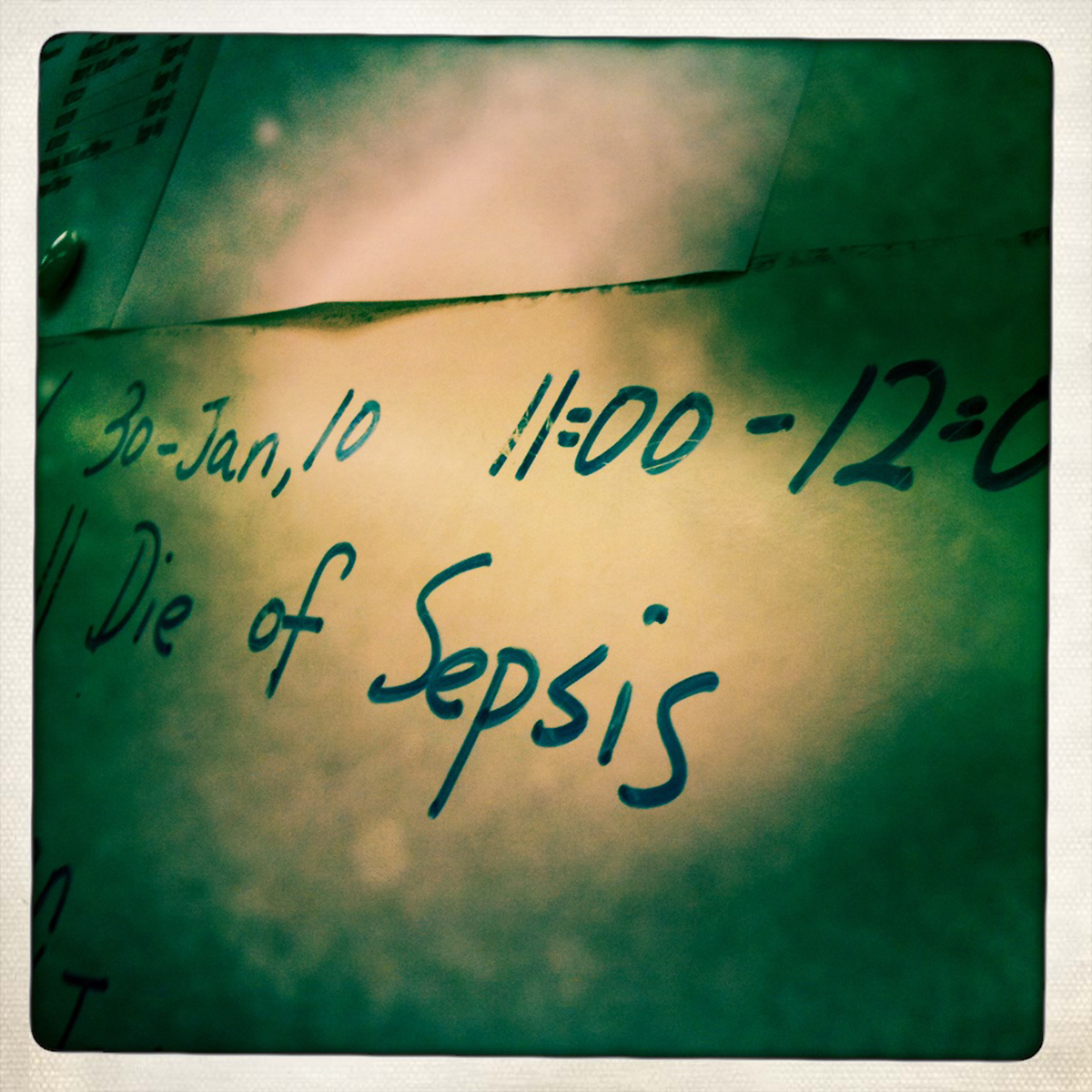Sepsis.
Even though awareness of this potentially-deadly condition has increased, a recent survey of Americans (most of whom use the internet all the time, including, frequently, to look up health information) shows that only 58 percent know the word.
That improved knowledge has directly been linked to awareness campaigns, and that's why World Sepsis Day, September 13, matters.

We'll bombard you with some statistics that really make the problem of sepsis hit home. Because that doesn't offer any practical value, we'll then tell you what you need to know about sepsis to reduce your risk of developing it and to increase your odds of surviving if you do get sepsis.
Sepsis: A Closer Look at the Mass Killer You've Never Heard Of
You might be asking: What is sepsis? It's a life-threatening reaction to an infection (usually, but not always, a bacterial infection) that sends the body's immune system into overdrive. Understanding exactly how this happens isn't important. Different medical professionals define sepsis in slightly different ways, and it takes in-depth medical knowledge to truly get what it's all about.
You do need to know what can happen if you develop sepsis. If the condition isn't treated promptly and properly, the patient's organs can start to shut down, and death can result.
- Sepsis is responsible for 20 percent of all deaths worldwide, the World Health Organization estimates. Sepsis is best describe as the "final pathway to death" — the initial infection starts the cascade, and sepsis sees it through to the bitter end.
- Worldwide, 27 percent of patients hospitalized for sepsis, and 42.6 percent of those who are in the intensive care unit, die.
- A quarter of all sepsis cases are acquired in hospital. Sepsis is a leading cause of death in hospital patients, and procedures as simple as inserting an IV line or a catheter can cause it.
- Between 47 and 50 million cases of sepsis are diagnosed every year on a global level. At least 11 million of these patients die from sepsis.
- People with weaker immune systems are more likely to develop sepsis. At least 40 percent of sepsis deaths occur in young children.
- If you survive sepsis, your journey doesn't end there. Half of all sepsis survivors suffer permanent psychological and physical consequences, and many patients will have to go to hospital again.
Sepsis is caused by infections. The most common infections to trigger sepsis are:
- Diarrheal infections (9.2 million cases)
- Respiratory infections (1.8 million deaths)
- Bacterial bloodstream infections
- Malaria
- Dengue fever
- Systemic fungal infections
Most cases of sepsis are triggered by bacterial infections, but viruses like COVID-19 can also be responsible.
What Can You Do to Prevent Sepsis?
Anyone can develop sepsis, and it isn't always preventable.
High-risk groups include elderly people, very young children, pregnant women and new mothers, people with chronic medical conditions including diabetes, immunocompromised people, and people who are hospitalized.
While sepsis can't always be prevented, you can take proactive steps to lower your risk. You can:
- Remember that any infection can lead to sepsis. Get vaccinated for anything you can to reduce your risk of developing infections. Get your flu shot, pneumonia shot, COVID shot, and chickenpox shot.
- Care properly for any wound you sustain, no matter how small. Even cuts and scrapes can lead to sepsis. Care for your wound as instructed by your doctor and always wash your hands properly before touching it.
- Keep chronic conditions that impact the way in which your immune system functions, like diabetes and high blood pressure, under control.
- Practice excellent hygiene wherever you go. Wash your hands properly and often. Do not reuse medical supplies such as catheters. Make sure medical devices you use, such as inhalers, are clean.
- If you're worried about your health, see a doctor right away.
How Can You Recognize the Symptoms of Sepsis?
Sepsis is hard to diagnose precisely because the symptoms are often vague. Many other conditions can cause the same symptoms. This is why sepsis is a silent killer, one that can often progress before you know you have it.
Nonetheless, it is better to be safe than sorry. If you have an infection and you also have any of the following signs or symptoms, seek immediate medical attention. Do the same for anyone in your life, as people with sepsis may not be lucid enough to see a doctor on their own:
- A systolic blood pressure of 100 mm Hg or less — this is the first number on your blood pressure cuff.
- Confusion or an altered mental state.
- More than 22 breaths per minute.
- A high fever or extremely low body temperature.
- Shortness of breath.
- Slurred speech.
- Losing consciousness.
- A rapid heartbeat.
- Chills and shivering.
- Skin turning blue.
- Nausea (with or without vomiting).
- Diarrhea.
This World Sepsis Day, make sure you know when to be concerned enough to see a doctor — and commit to taking immediate action if you spot the signs of sepsis.
- www.sepsis.org/news/sepsis-word-know-meaning-learn/#:~:text=SAN%20DIEGO%2C%20CA%20%E2%80%93%20Sepsis%20awareness,in%20June%20and%20July%202017.
- www.cidrap.umn.edu/news-perspective/2020/09/who-says-sepsis-causes-20-global-deaths#:~:text=A%20complication%20of%20severe%20infections&text=Referred%20to%20in%20the%20report,unit%20patients%20treated%20for%20sepsis.
- www.who.int/news/item/08-09-2020-who-calls-for-global-action-on-sepsis---cause-of-1-in-5-deaths-worldwide


Your thoughts on this